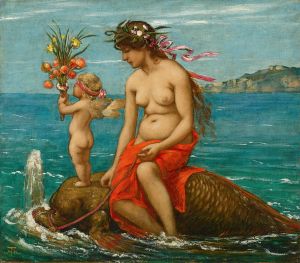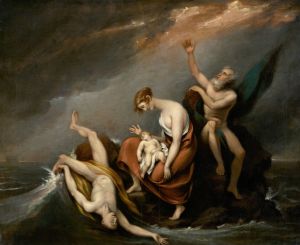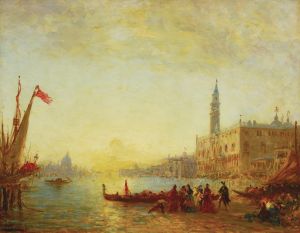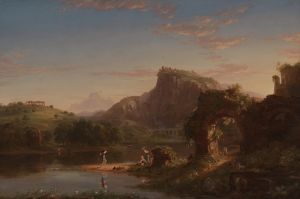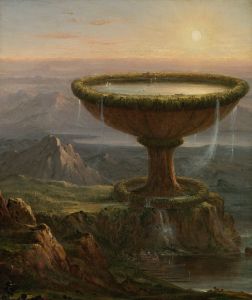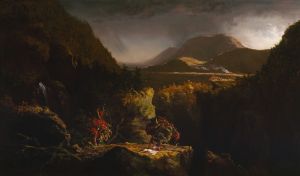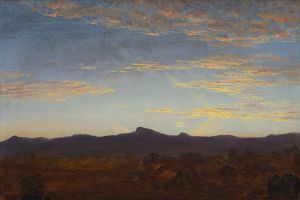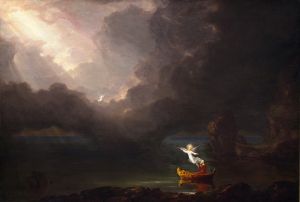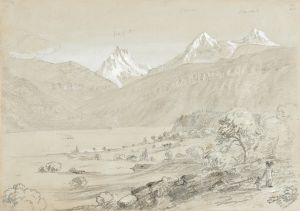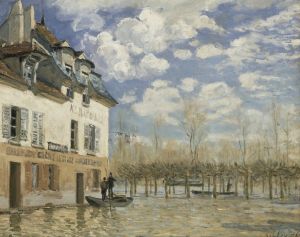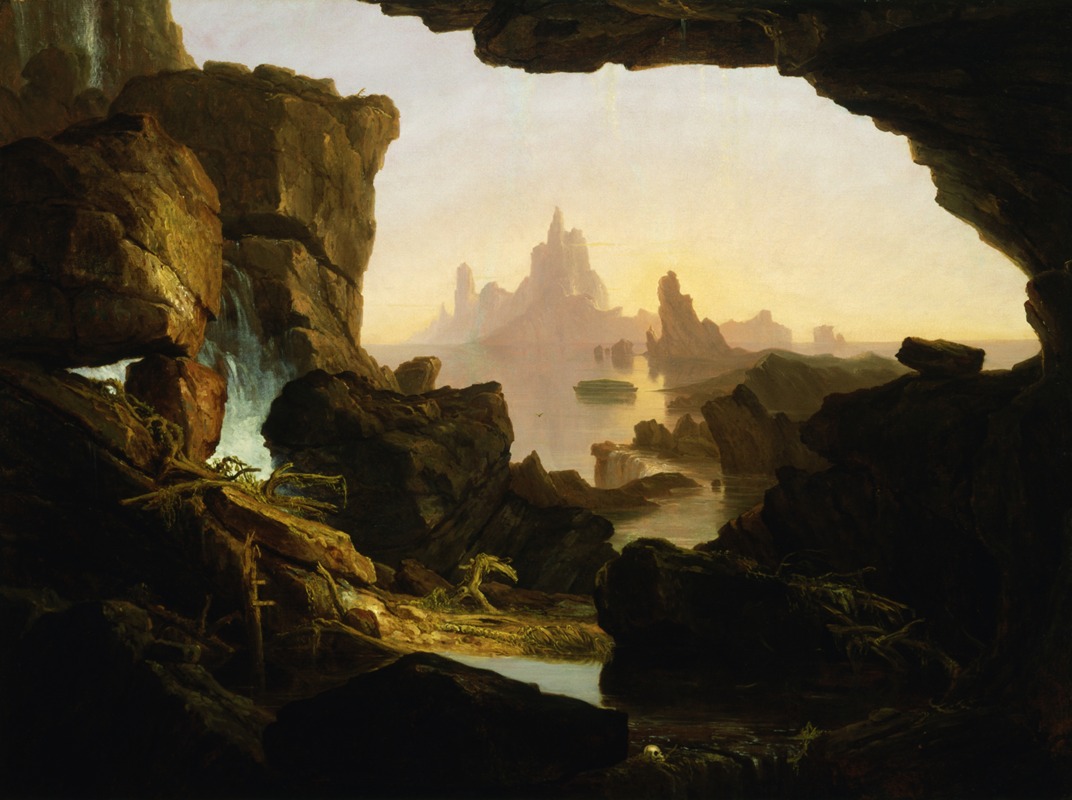
The Subsiding of the Waters of the Deluge
A hand-painted replica of Thomas Cole’s masterpiece The Subsiding of the Waters of the Deluge, meticulously crafted by professional artists to capture the true essence of the original. Each piece is created with museum-quality canvas and rare mineral pigments, carefully painted by experienced artists with delicate brushstrokes and rich, layered colors to perfectly recreate the texture of the original artwork. Unlike machine-printed reproductions, this hand-painted version brings the painting to life, infused with the artist’s emotions and skill in every stroke. Whether for personal collection or home decoration, it instantly elevates the artistic atmosphere of any space.
The Subsiding of the Waters of the Deluge is a painting by the American artist Thomas Cole, completed in 1829. Cole, widely regarded as a founder of the Hudson River School, was known for his landscape paintings that often incorporated themes of nature, religion, and morality. This particular work is one of his early pieces and reflects his interest in biblical narratives and the sublime power of nature.
The painting depicts a scene from the Book of Genesis in the Bible, specifically the aftermath of the Great Flood. The waters of the deluge are shown receding, revealing a desolate and barren landscape. In the foreground, a jagged tree trunk and scattered debris emphasize the destruction caused by the flood. The ark, which carried Noah, his family, and the animals, can be seen in the distance resting on a mountaintop, as described in the biblical account. Above, the sky is dramatic, with clouds parting to allow light to break through, symbolizing hope and renewal after the devastation.
Cole’s use of light and shadow in this painting is notable, as it creates a stark contrast between the remnants of destruction and the promise of a new beginning. The composition draws the viewer’s eye toward the ark and the clearing sky, reinforcing the theme of divine intervention and salvation. The work also reflects Cole’s fascination with the natural world and his ability to convey its grandeur and power.
The painting was created during a period when Cole was gaining recognition for his landscapes, which often carried moral or spiritual undertones. His works were influenced by European Romanticism, particularly the emphasis on the sublime and the awe-inspiring aspects of nature. Cole’s interest in biblical themes was also evident in other works, such as his later The Garden of Eden (1828) and Expulsion from the Garden of Eden (1828).
The Subsiding of the Waters of the Deluge is currently housed in the Smithsonian American Art Museum in Washington, D.C. It remains an important example of Cole’s early exploration of religious and allegorical subjects, as well as his skill in capturing the emotional and visual impact of natural landscapes. The painting continues to be studied and appreciated for its artistic and thematic significance within the context of 19th-century American art.







